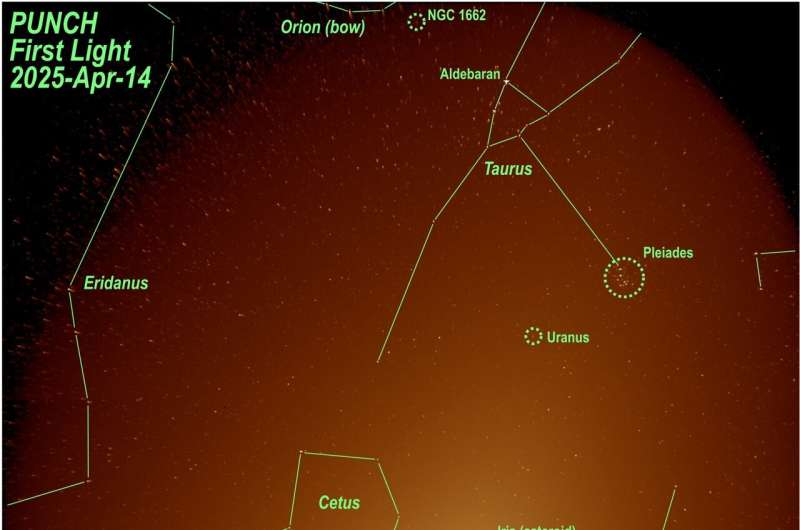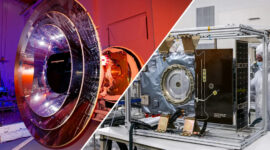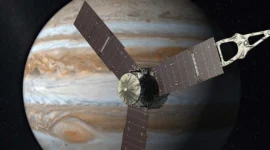In a significant milestone for solar physics, on 14th April, 2025, NASA’s Polarimeter to Unify the Corona and Heliosphere (PUNCH) mission has successfully captured its “first light” images. This achievement marks the initial operation of the mission’s instruments, providing the first glimpses of the Sun’s outer atmosphere, the corona, and the surrounding space. The PUNCH mission, consisting of a constellation of four small, Earth-orbiting satellites, aims to revolutionize our understanding of how the Sun’s corona transitions into the solar wind that permeates our solar system.
Mission Objectives and Design
Launched on March 11, 2025, the PUNCH mission is designed to provide unprecedented global, 3D observations of the inner heliosphere. The primary goal is to bridge the 60-year gap in our understanding of the region where the Sun’s hot corona evolves into the solar wind. This outflow of charged particles from the Sun influences the entire solar system, affecting space weather events that can impact Earth-based technology and astronauts.
- One Narrow Field Imager (NFI): This coronagraph is designed to block the Sun’s bright light, allowing for detailed observations of the inner corona, where the solar wind originates.
- Three Wide Field Imagers (WFIs): These heliospheric imagers have a broad field of view, capturing the faint, outer regions of the corona and the developing solar wind as it expands into space.
Working in concert, these four instruments function as a single “virtual instrument,” providing a 90-degree field of view centered on the Sun. The satellites orbit Earth in a coordinated formation, allowing for continuous observation of the inner solar system. A key aspect of the mission is the use of polarized light measurements, which will enable scientists to create 3D maps of the corona and solar wind features, offering insights into their structure and evolution.
The “first light” event signifies that the cameras on board the PUNCH satellites are operational, in focus, and performing as expected. These initial images, captured on April 14th and 16th, 2025, are a critical step in the mission’s commissioning phase.
- Narrow Field Imager (NFI) First Light (April 14): The first image from the NFI shows the Sun’s corona against the backdrop of stars in the constellation Pisces. While the image contains background “zodiacal light” (sunlight reflecting off dust particles in the inner solar system) and some artifacts due to the instrument not yet being fully calibrated, it successfully demonstrates the NFI’s ability to capture deep-field views of the corona. Scientists will continue to calibrate the NFI data to eventually remove about 99% of the corona’s light, revealing the faint structures and material streaming from the Sun’s outer atmosphere in detail.
Wide Field Imagers (WFIs) First Light (April 16): The three WFIs captured a broad view of the sky, extending out to approximately 45 degrees from the Sun. These images also show the zodiacal light, along with several constellations and even an asteroid (7 Iris) that photobombed one of the shots. These initial WFI images confirm the wide field of view and the proper functioning of the cameras. The mission team will work on removing the background star fields and zodiacal light in future processing to focus on the faint glimmer of the solar wind as it travels away from the Sun.
Significance of the PUNCH Mission
The data from the PUNCH mission is expected to provide answers to fundamental questions about the Sun-Earth connection, including:
- How does the Sun’s corona transition into the solar wind? Understanding the physical processes in this region is crucial for predicting space weather.
- How are structures in the solar wind created and how do they evolve? PUNCH will provide the first continuous, wide-field views of these structures as they propagate through the inner solar system.
- How do these solar events affect the space environment and, consequently, Earth? By observing the origins and development of space weather phenomena like coronal mass ejections, PUNCH can contribute to more accurate predictions of their arrival and potential impact on our technology and astronauts in space.
The PUNCH mission’s innovative use of polarized light imaging will provide a unique perspective, allowing scientists to discern the 3D structure and properties of the corona and solar wind in ways never before possible. This new information will be invaluable for advancing our understanding of the Sun and its influence on the solar system.
Next Steps
The PUNCH mission team will now focus on the commissioning phase, which involves calibrating the instruments and refining the data processing techniques. Scientists anticipate that the mission will begin delivering scientific data by the summer of 2025, ushering in a new era of solar and heliospheric physics. The data collected by PUNCH will be made publicly available through NASA’s Solar Data Analysis Center, allowing the broader scientific community to participate in this groundbreaking research.




